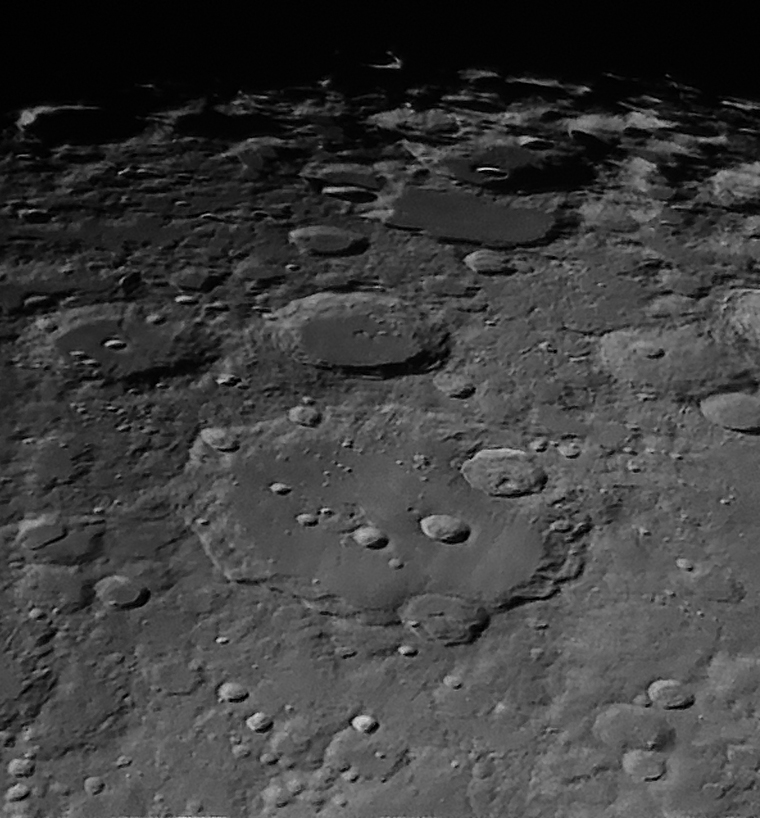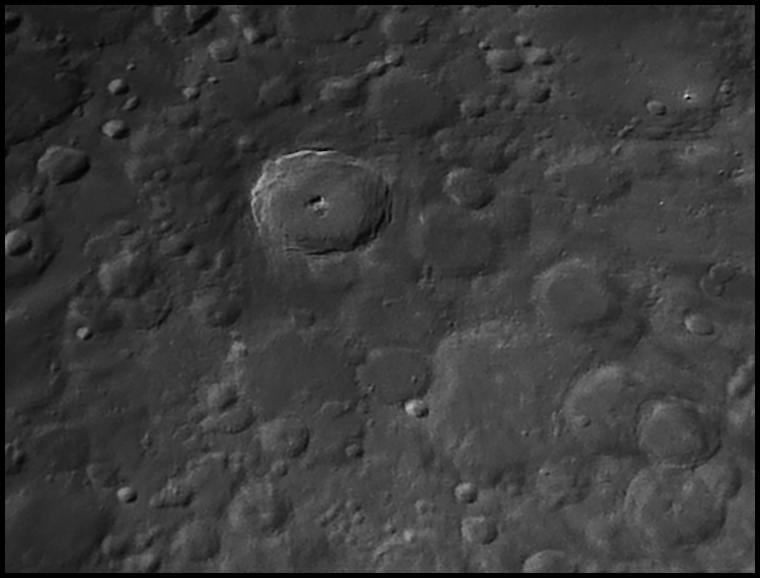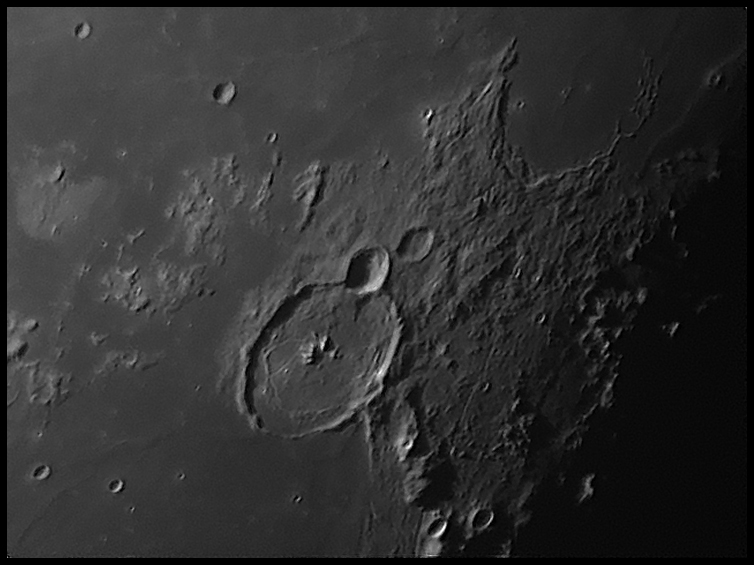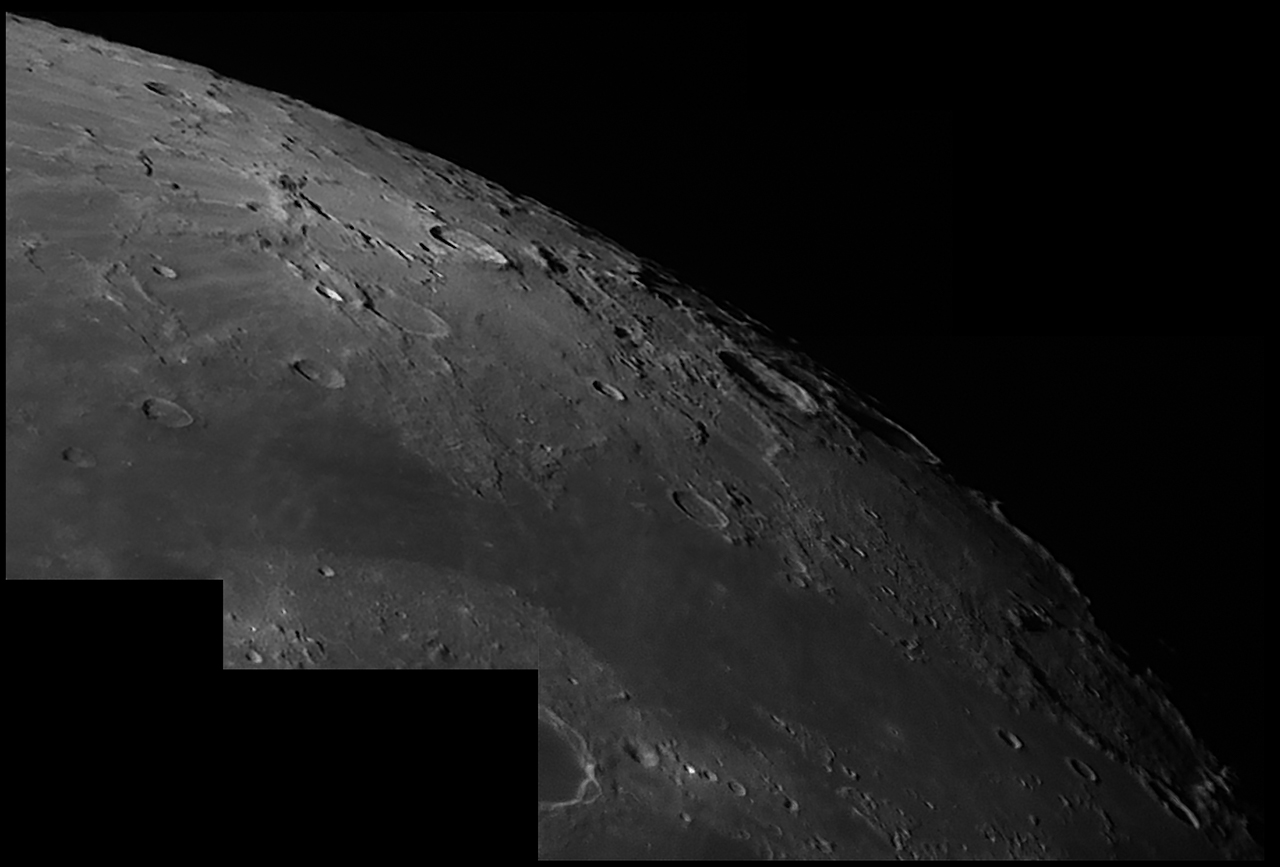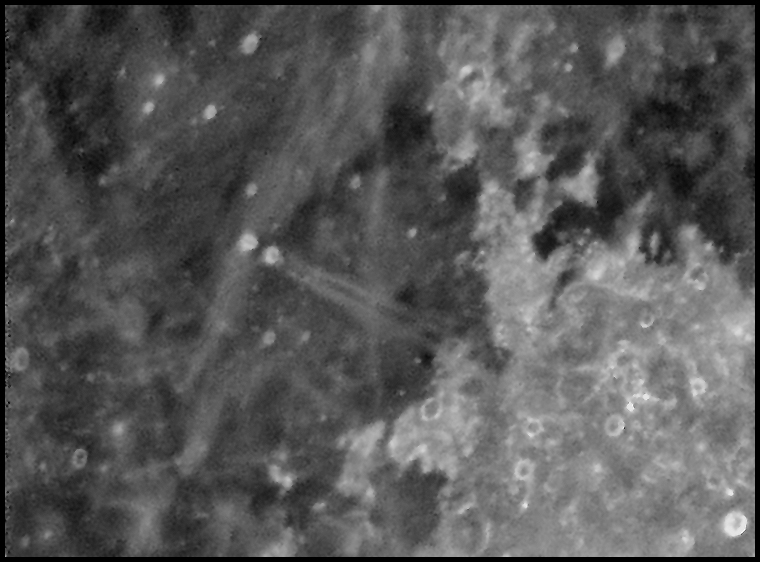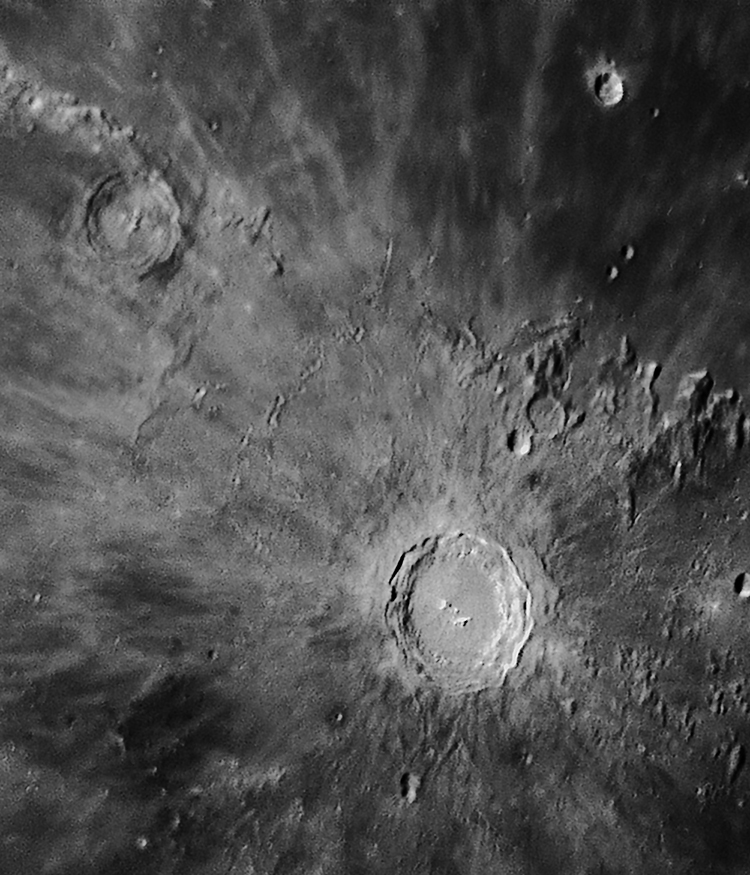Howling at the Moon, 6 :: home :: |
|
11/25/2012: I pointed the 10-inch R-C at the Moon and collected ~38 video clips (20GB!) of moondust. The R-C has a relatively huge central obstruction and is theoretically unsuited to planetary imaging. Really.
Clavius and points south is a two-frame mosaic of the best 150 frames from two 400 frame clips made with the PGR Chameleon working with the Barlow on the snout of the 1.25-inch adapter through a Baader 685nm IR-pass filter to help control atmospheric blur. About 20ms with 0db of gain and gamma around 0.88. I tried 0.50 and 2.6, but this seemed a good compromise. Next: Tycho.
Fractured Gassendi is the best 160 frames from a concatenated 2,800-frame clip:
I love the sculpted look of the mountains rising above the lava plains of Mare Imbrium in that photo, the slump block on the limb of Plato, the narrow rim of shadow, and the rills running through the hills to the left of the crater. The rill in the Alpine Valley does not appear in this image: better light and an even closer look are needed. I shot some clips including the limb which let me measure the image scale which works out to almost exactly 0.20"/pixel. The EFL is 4 meters, the F-ratio 15.7 -- which means that, seeing permitting, optimum detail is still a ways away. F30 - F40 would be best (supposedly). Here's the moonscape beyond Plato:
Messier A & B, the most aptly named crater on the Moon owing to that perfect "comet" of ejecta spraying out across the Sea of Storms.
In this two-frame mosaic: Brilliant Copernicus (which NatGeo noted is almost exactly the size of Yellowstone National Park) surrounded by an ejecta blanket, secondary craters, buried Stadius to the upper left and Eratosthenes even further to the upper left at the head of the lunar Apennines. Some of these frames are grainier than others. Not sure why so much difference as the capture and post-proc were quite similar in all cases. When you're pusing the data this hard, any little thing matters. Go figure. The Dec-offset feature of PulseGuide was invaluable in minimizing drift at these scales. The Moon appeared to be northing at a few tenths of an arc-second per second of time (Guide says 0.13"/sec), but PulseGuide compensated easily -- I adjusted this by inspection, so lunar motion, any polar misalignment, and atmospheric diffraction were all dialed out. If you knew how lousy the seeing was tonight, you'd know how I excited I am by these results.
|
:: top ::
© 2012, David Cortner
